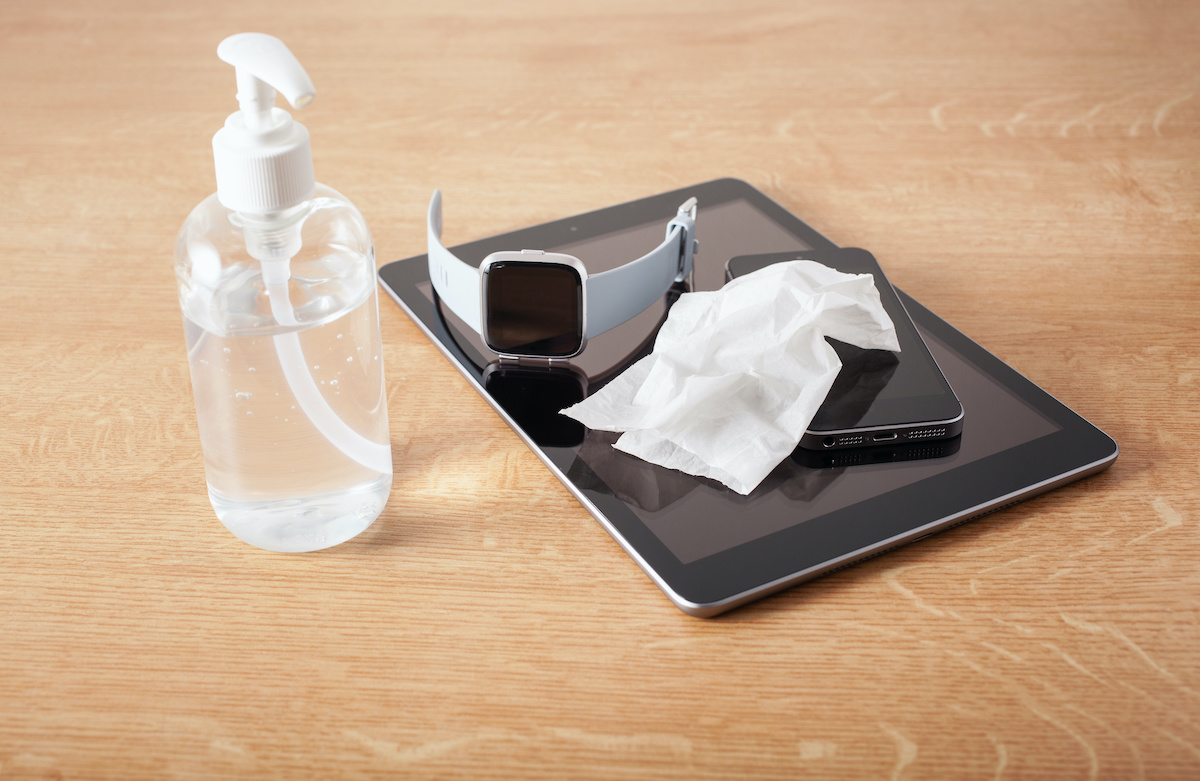
Researchers found potentially harmful germs on 95% of wristbands
Smartwatches offer up lots of useful information. That little device on your wrist may track your heart rate and hours of sleep, for instance. It probably logs your fitness activities and counts your steps, too.
But one thing your watch doesn’t tell you is the grossness level of its wristband.
A small study found bacteria such as Staphylococcus and E. coli on a whopping 95% of tested watch wristbands. You’re essentially wearing a habitat for potentially harmful germs. (Pretty icky, right?). Luckily, there’s a simple solution to this problem, explains Cleveland Clinic family medicine specialist Daniel Allan, MD.
The world is a germy place. Millions (if not billions) of different types of bacteria live among us. So, as you go about your day-to-day activities, you’re bound to come in contact with some of them.
Now, most of us neutralize the immediate threat of germs on our skin by regularly washing our hands or using a hand sanitizer.
But think about everything you bring along on your daily adventures, says Dr. Allan. There’s your smartwatch, of course, plus your cell phone, credit cards and more. Those items also are exposed to bacteria—and it shows if you dare test for it.
Researchers in the watch study found bacteria on all different types of wristbands. Cloth, plastic,and rubber watchbands ranked as the grimiest. Metal watchbands had the lowest germ counts.
What you do while wearing your watch also makes a difference in the ick factor. If you wear your watch during a workout, for instance, your sweat helps bacteria flex its muscles. Handling animals also elevates germ counts.
Are bacteria on watchbands dangerous?
Bacterial infections can lead to uncomfortable outcomes such as a skin rash or various gastrointestinal issues (think diarrhea and nausea). Worst-case scenarios can involve your heart and lungs.
Is that going to happen from a grubby watchband? Probably not—but it’s always better to limit unnecessary exposure to bacteria, notes Dr. Allan.
Risk levels increase if you’re immunocompromised or are around someone whose immune system is weakened. (That was one of the main concerns cited by the authors of the watchband study.)
Increased contact with bacteria can also contribute to the development of antibiotic resistance, which can have a long-term impact on infection control.
The solution? Clean your watchband!
How often do you clean your watchband? Odds are, it’s not enough, at least given what researchers found when they went searching for bacteria on watchbands.
The good news is you don’t need anything fancy to kill bacteria present on your wristband. Use a 70% isopropyl alcohol wipe, 75% ethyl alcohol wipe, or Clorox® disinfecting wipe. You can also make a diluted alcohol mixture and lightly mist a microfiber cloth to wipe down you watch surface.
Dr. Allan suggests making it a habit to clean your wristband daily. (He offers a similar recommendation for cell phones, which have been found to harbor more germs than a toilet seat. But cell phones require more specialized cleaners to avoid damaging the screen.)
“Wristwatches can indeed carry germs, potentially contributing to the spread of bacteria and ultimately infections,” confirms Dr. Allan. “Therefore, it’s advisable to clean wristwatches to minimize the risk. Ideally, daily cleaning is recommended—but any frequency is better than none.”
Sources: https://health.clevelandclinic.org/bacteria-in-wristbands?;











